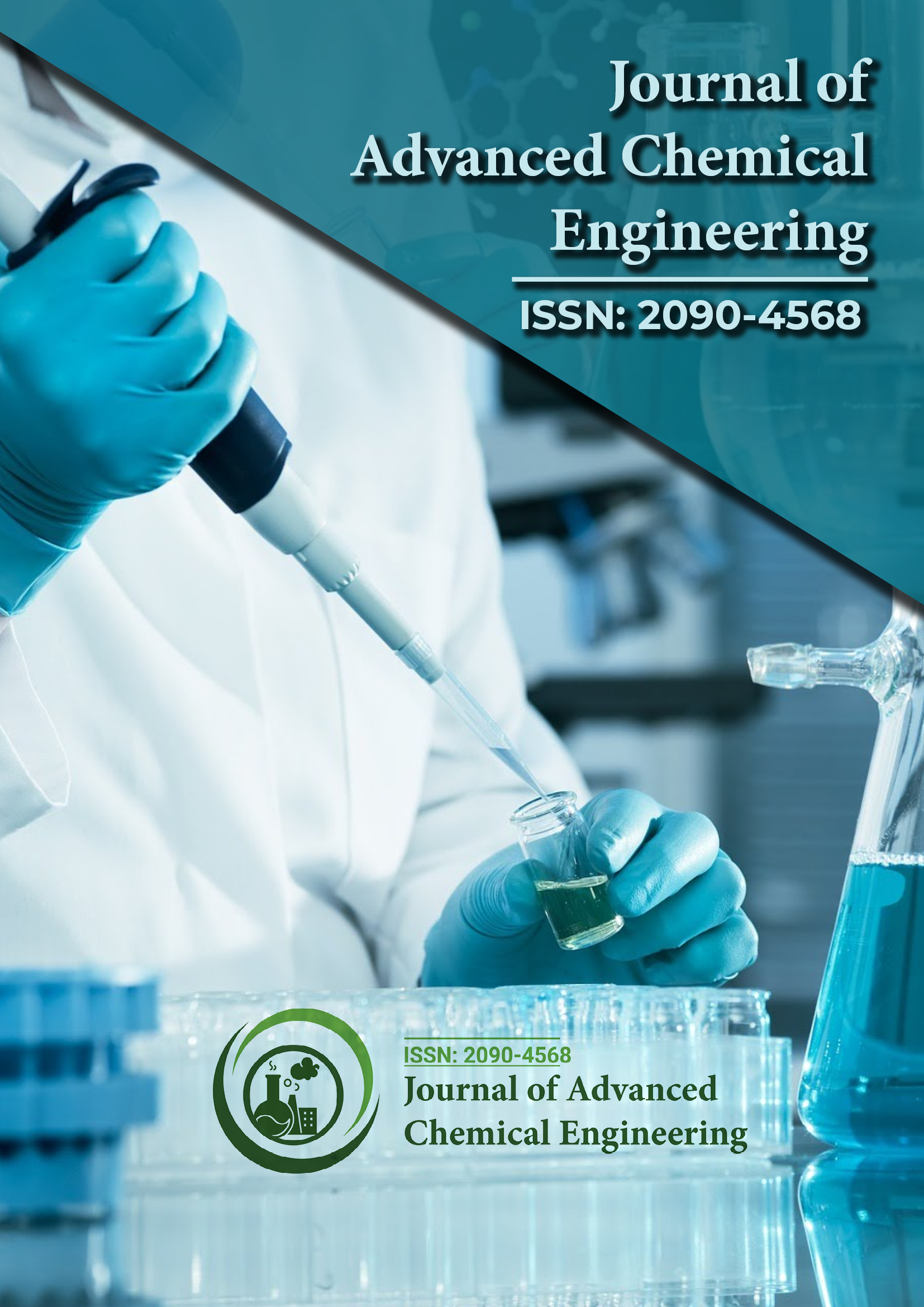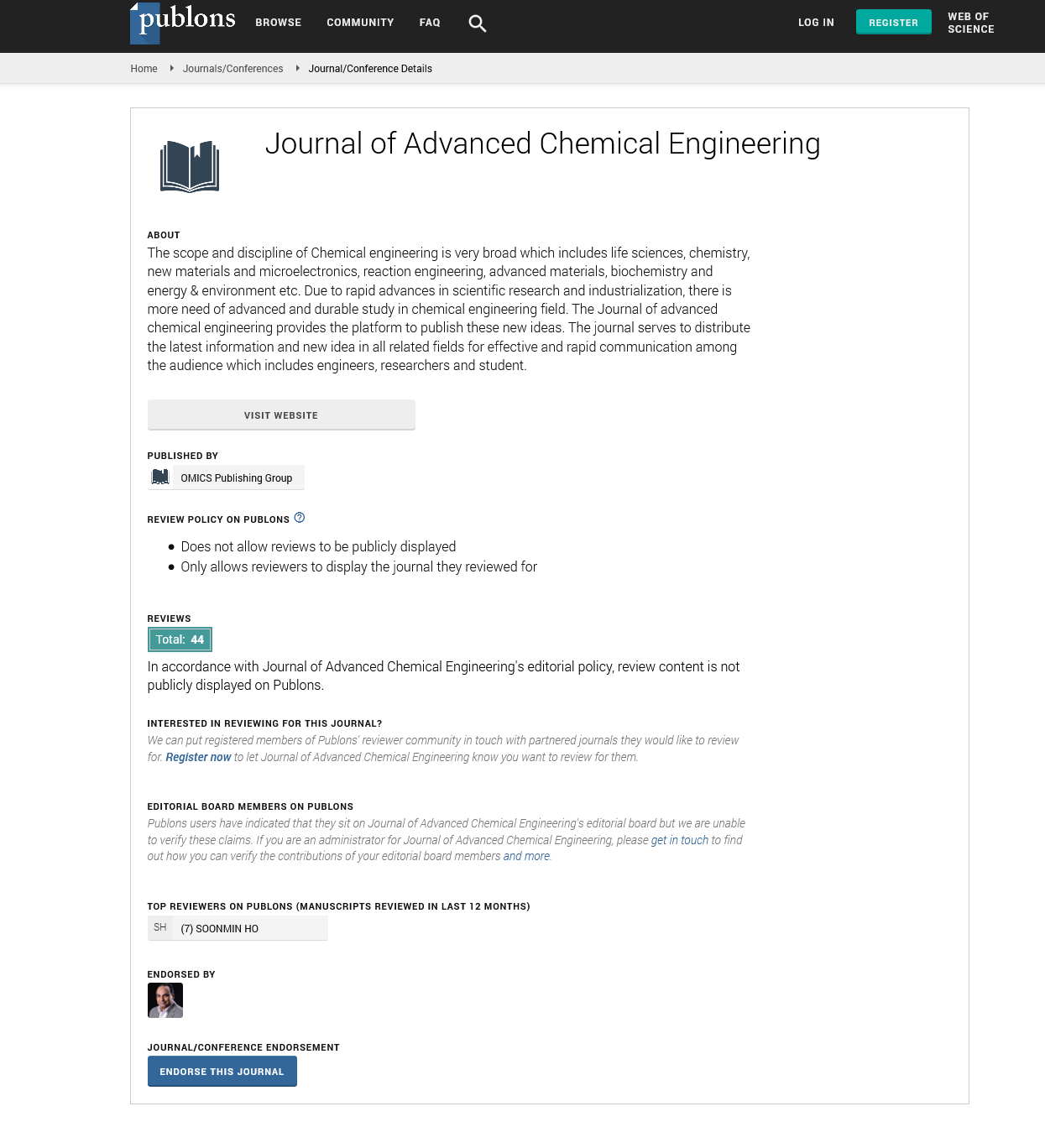Indexed In
- Open J Gate
- Genamics JournalSeek
- Smithers Rapra
- RefSeek
- Directory of Research Journal Indexing (DRJI)
- Hamdard University
- EBSCO A-Z
- OCLC- WorldCat
- Scholarsteer
- Publons
- Geneva Foundation for Medical Education and Research
- Google Scholar
Useful Links
Share This Page
Journal Flyer

Open Access Journals
- Agri and Aquaculture
- Biochemistry
- Bioinformatics & Systems Biology
- Business & Management
- Chemistry
- Clinical Sciences
- Engineering
- Food & Nutrition
- General Science
- Genetics & Molecular Biology
- Immunology & Microbiology
- Medical Sciences
- Neuroscience & Psychology
- Nursing & Health Care
- Pharmaceutical Sciences
Commentary - (2025) Volume 15, Issue 2
Innovations in Green Catalysis for a Sustainable Future
Samuel Ortega*Received: 30-May-2025, Manuscript No. ACE-25-29803; Editor assigned: 02-Jun-2025, Pre QC No. ACE-25-29803 (PQ); Reviewed: 16-Jun-2025, QC No. ACE-25-29803; Revised: 23-Jun-2025, Manuscript No. ACE-25-29803 (R); Published: 30-Jun-2025, DOI: 10.35248/2090-4568.25.15.364
Description
Green catalysis has become one of the most promising and widely researched areas in chemical engineering because of its potential to transform industrial processes that have traditionally been energy intensive, waste generating, and environmentally damaging. The need for sustainable development has pushed researchers to look beyond conventional catalytic approaches and explore greener, safer, and more efficient alternatives. Catalysis, by definition, is the acceleration of a chemical reaction using a substance that itself remains unchanged at the end of the process. For over a century, catalysts have been central to the chemical industry, making possible the large-scale production of fuels, fertilizers, plastics, pharmaceuticals, and countless other materials. Yet traditional catalysts and catalytic processes often rely on toxic metals, hazardous solvents, and high-temperature conditions, which contradict the principles of environmental responsibility. Green catalysis seeks to address these issues by introducing new pathways that minimize waste, conserve energy, and reduce the carbon footprint associated with chemical manufacturing.
The movement toward green catalysis did not arise in isolation but as part of the broader framework of green chemistry, which promotes the design of products and processes that reduce or eliminate the use and generation of hazardous substances. Within this framework, catalysis plays a particularly vital role because even small improvements in catalyst design or efficiency can translate into significant reductions in emissions, energy consumption, and raw material use when applied on an industrial scale. One of the central ideas of green catalysis is to employ earth-abundant, non-toxic, and recyclable materials as catalysts rather than relying on rare and hazardous elements such as palladium, platinum, or rhodium. Researchers are increasingly exploring iron, copper, nickel, and cobalt as viable alternatives, as these metals are cheaper, widely available, and often less harmful to the environment.
Beyond metals, there has also been considerable interest in organocatalysis, which uses small organic molecules as catalysts rather than metals. Organocatalysts offer numerous advantages, including lower toxicity, greater biodegradability, and the potential for selective transformations under mild conditions. They have been particularly impactful in the synthesis of pharmaceuticals and fine chemicals, where precision and purity are critical. Enzyme catalysis, or biocatalysis, is another rapidly expanding area. Enzymes, being nature’s own catalysts, are highly efficient, selective, and capable of operating in aqueous environments at ambient temperatures. Advances in genetic engineering and protein design now allow scientists to tailor enzymes for specific industrial processes, further broadening their applicability. Biocatalysis has already transformed industries such as food processing, pharmaceuticals, and biofuels, and it continues to grow as new enzymes are discovered or engineered to tackle increasingly complex chemical transformations.
The use of alternative reaction media has also gained attention in the context of green catalysis. Traditional organic solvents are often volatile, flammable, and toxic, posing risks to workers, consumers, and the environment. Green catalysis seeks to replace these solvents with safer alternatives such as water, supercritical carbon dioxide, or ionic liquids. Water, in particular, has emerged as an attractive medium due to its abundance, non-toxicity, and low cost. Many catalytic reactions that were once thought impossible in water are now being successfully demonstrated, thanks to advances in catalyst design and understanding of reaction mechanisms. Supercritical carbon dioxide, a fluid state of COâ?? that exhibits both gas-like and liquid-like properties, is another promising medium. It is nontoxic, non-flammable, and can be easily separated from reaction products simply by depressurization. Ionic liquids, which are salts that remain liquid at relatively low temperatures, provide a tunable medium with negligible vapor pressure, reducing air pollution risks. Each of these media presents unique challenges but also opens new opportunities for designing greener catalytic processes.
Another major innovation in green catalysis lies in the integration of renewable energy sources into catalytic processes. Photocatalysis, for example, uses light energy to drive chemical reactions, mimicking natural photosynthesis. This approach has shown particular promise in water splitting to generate hydrogen fuel, in the degradation of pollutants, and in COâ?? reduction to produce useful chemicals. Electrocatalysis, which employs electricity to power chemical transformations, is similarly aligned with renewable energy integration, especially when coupled with solar or wind power. Both photocatalysis and electrocatalysis not only provide cleaner routes for chemical production but also offer opportunities to store intermittent renewable energy in the form of chemical bonds, thereby linking green catalysis to broader energy sustainability strategies.
Citation: Ortega S (2025). Innovations in Green Catalysis for a Sustainable Future. Adv Chem Eng. 15:364.
Copyright: © 2025 Ortega S. This is an open-access article distributed under the terms of the Creative Commons Attribution License, which permits unrestricted use, distribution, and reproduction in any medium, provided the original author and source are credited.

